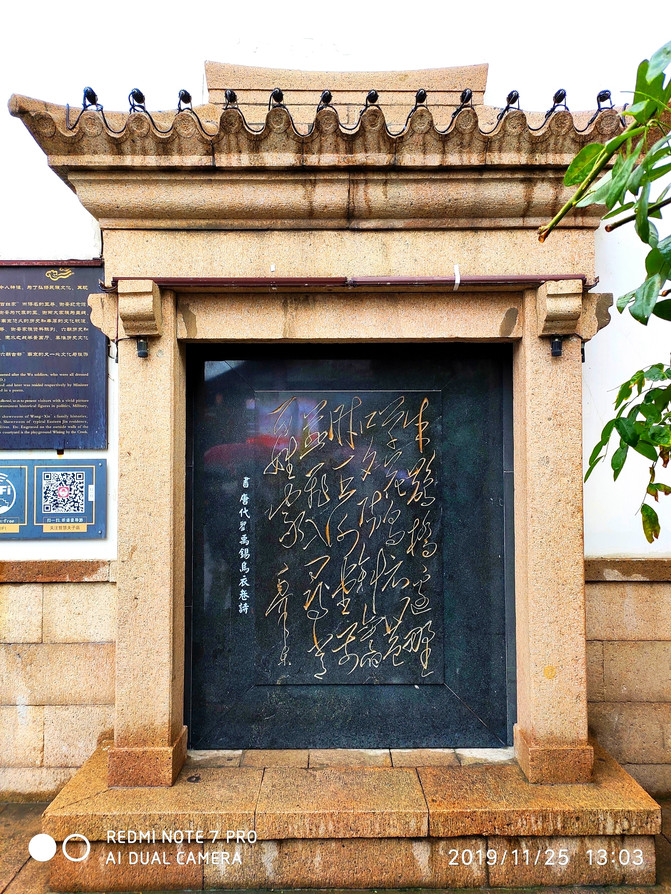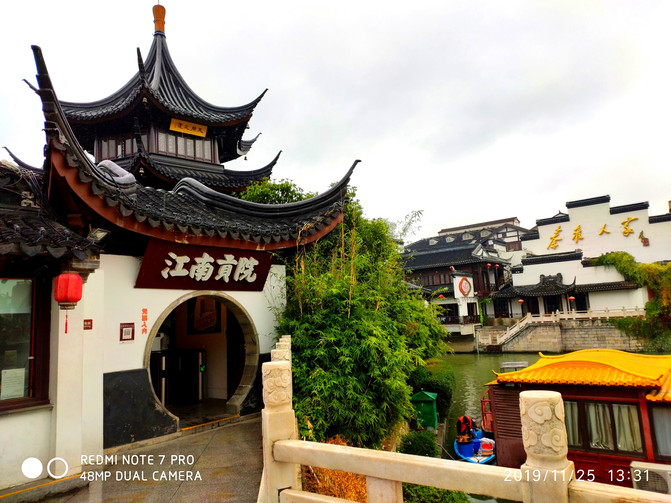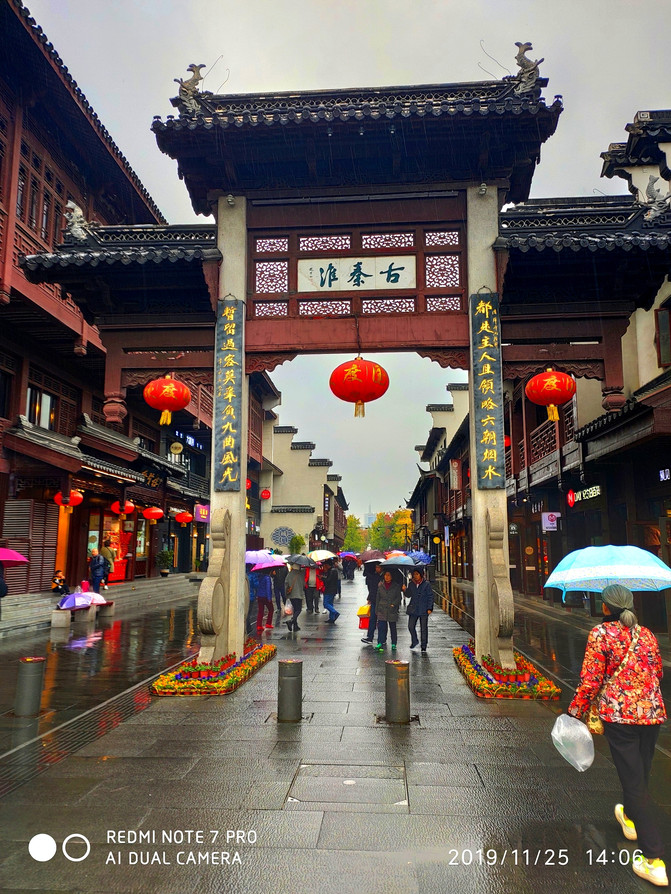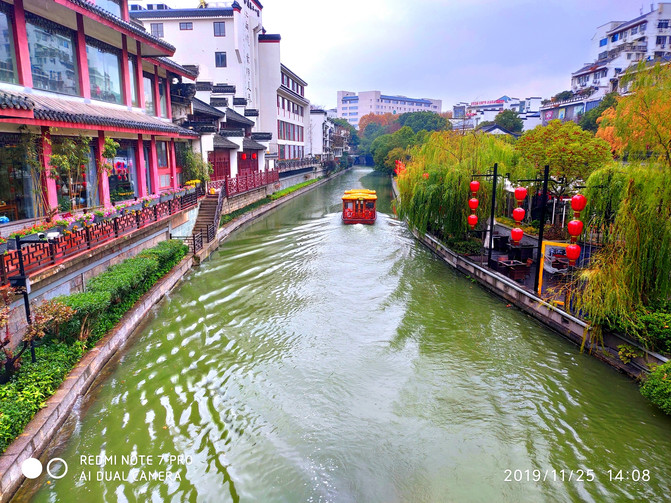Stroll along the Qinhuai River under the continuous autumn rain

After playing the east of Laomen, you will walk 800 meters north to reach the Confucius Temple. Standing in front of Liu Yuxi's "Wuyi Alley", it is the autumn rain, looking up at the grandeur of the high-rise buildings in Wuyi Alley, with the white walls and black tiles, you have to admire the luxury and beauty of Wuyi Alley's architecture.

Wuyi Lane may be the oldest ancient alley in Nanjing. According to legend, it has a history of 1,600 years. When Sun Quan of the Eastern Wu established the capital in Nanjing, the military camp was stationed in Wuyi Lane. The soldiers of the Eastern Wu Dynasty wore black military uniforms, so this place was called Wuyi Lane by the common people. Of course, what makes Wuyi Lane known to us is the ancient poem that flew into the homes of ordinary people in the old times.


Ancient well with age

From the "Wang Xie Tang" in the poem to today's "Wang Dao Xie An Memorial Hall"

Only after reading the introduction here did I realize that Wang Xizhi was the nephew of the Wang family. Everyone also knows that Wang Xizhi's masterpiece is "Preface to the Orchid Pavilion", which is imitated by everyone and no one has surpassed it to this day.




Wuyi Lane written by Chairman Mao by Liu Yuxi, a poet of the Tang Dynasty



This is a river slowly flowing-the Qinhuai River. On both sides of the Qinhuai River, ancient buildings since the Northern and Southern Dynasties are gathered. Ancient merchants gathered here, and many migrating poets met here. They actually built luxury houses and gardens. Therefore, the architectural features on both sides of the Qinhuai River are colorful, including emblem buildings, temple buildings, and southern garden-style buildings, which are reflected in the superb architectural skills and national characteristics of ancient times.

A river flows slowly and slowly through Nanjing. It flows through it. I don't know what words to use to describe its prosperity. Looking through the dictionary, it seems that only luxury, luxury, and decadent sounds can be used to describe it.

Standing in front of the Confucius Temple, it is autumn rain. Looking at the Confucius Temple from a distance, it is a large-scale ancient building complex. It is splendid and reflects the characteristics of the temple architecture. The scale is much inferior to the Sankong Temple in Qufu. Although the building scale cannot be compared with the same, it is also composed of three major building complexes: Confucius Temple, Xuegong Palace and Gongyuan, which reflects the concept of people respecting Confucius since the Han Dynasty.



The Zhuangyuan Postal Pavilion is a converted from the Juxing Pavilion, the original building of Confucius Temple. It combines postal culture and imperial examination culture. It is very distinctive. There are postcards with characteristics of Nanjing and Confucius Temple sold in it.

The thousand-year-old Confucius Temple, the ten-mile-long Qinhuai River, endless cultural paintings and endless historical vicissitudes.


Not only are there many snacks in the Confucius Temple, but many foreign brands such as KFC, Pizza Hut, Starbucks, etc. also settle in.



There are also many handicrafts here, department store streets, delicious shops, and various.








I seemed to see Wang Dao, Xie An, Wang Xizhi, Xie Lingyun, and Gu Kaizhi from the Six Dynasties living here. They lived in luxury and luxury. They lived on the banks of the Qinhuai River and attracted merchants. They talked about poetry and essays. They splashed ink and splashed their hair. They lived a luxurious life in Jinling.

She is Nanjing's mother river and a symbol of Nanjing's history and civilization. Today, the decadent sound along the Qinhuai River is no longer, but the prosperity is still the same, the sound of lanterns, shadows, and oars are still the same, the style is still the same, and the romance is still the same.



Jiangnan Gongyuan was founded in 1668 (the fourth year of Qiandao in the Song Dynasty) and reached its peak during the Tongzhi period of the Qing Dynasty. There were 20644 examination houses alone. After the Imperial Examination Promotion School was suspended in 1905, Jiangnan Gongyuan ended its mission. From the beginning to the end, Jiangnan Gongyuan sent more than 800 top scholars, 100,000 Jinshi, and one million candidates to the country. During the Ming and Qing Dynasties, more than half of the country's officials came from Jiangnan Gongyuan.



The Qinhuai River carries too much history and stories, and witnesses too much prosperity and desolation. Liu Yuxi's Wuyi Alley has vividly written this alternation of prosperity and desolation.




Writer Mr. Ye Zhaoyan wrote in his "Old Nanjing. The opening sentence of "Old Shadow of Qinhuai" wrote: "The Qinhuai River is a river with a high cultural value. When people mention it, they will involuntarily draw history out.
Previous Article:Nanjing People Look at Nanjing--Yunji Study Room by Xuanwu Lake
Next Article:Winter in Shijiu Lake (3)-Zhujia Village on the Lake
